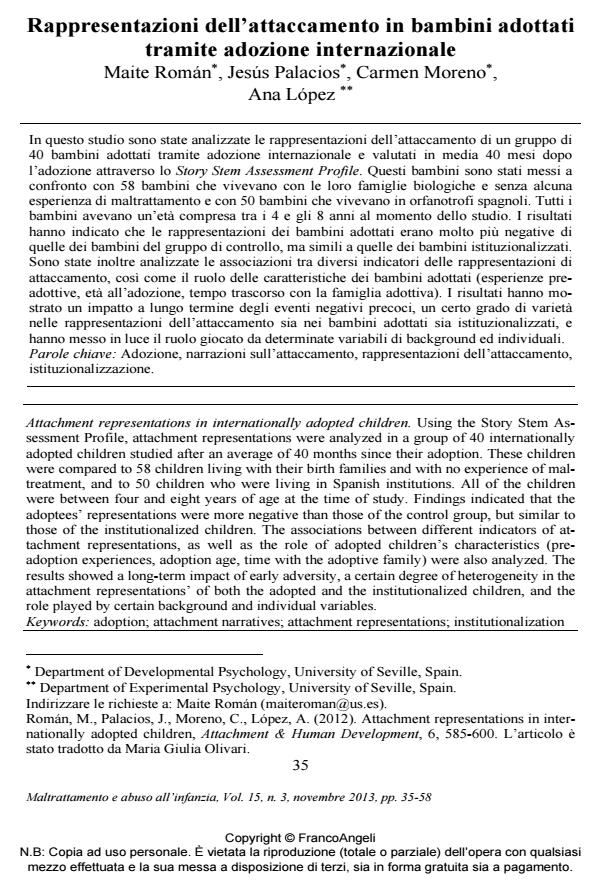Attachment representations in internationally adopted children. Using the Story Stem Assessment
Journal title MALTRATTAMENTO E ABUSO ALL’INFANZIA
Author/s Maite Romàn, Jesùs Palacios, Carmen Moreno, Ana Lòpez
Publishing Year 2013 Issue 2013/3
Language Italian Pages 24 P. 35-58 File size 739 KB
DOI 10.3280/MAL2013-003003
DOI is like a bar code for intellectual property: to have more infomation
click here
Below, you can see the article first page
If you want to buy this article in PDF format, you can do it, following the instructions to buy download credits

FrancoAngeli is member of Publishers International Linking Association, Inc (PILA), a not-for-profit association which run the CrossRef service enabling links to and from online scholarly content.
Profile, attachment representations were analyzed in a group of 40 internationally adopted children studied after an average of 40 months since their adoption. These children were compared to 58 children living with their birth families and with no experience of maltreatment, and to 50 children who were living in Spanish institutions. All of the children were between four and eight years of age at the time of study. Findings indicated that the adoptees’ representations were more negative than those of the control group, but similar to those of the institutionalized children. The associations between different indicators of attachment representations, as well as the role of adopted children’s characteristics (preadoption experiences, adoption age, time with the adoptive family) were also analyzed. The results showed a long-term impact of early adversity, a certain degree of heterogeneity in the attachment representations’ of both the adopted and the institutionalized children, and the role played by certain background and individual variables.
Keywords: Adoption; attachment narratives; attachment representations; institutionalization
- Ricucire le emozioni nell'esperienza adottiva: considerazioni teorico-cliniche e utilizzo del genogramma Flavia Alaggio, Emanuela Polverari, in RIVISTA DI PSICOTERAPIA RELAZIONALE 55/2022 pp.52
DOI: 10.3280/PR2022-055004
Maite Romàn, Jesùs Palacios, Carmen Moreno, Ana Lòpez, Rappresentazioni dell’attaccamento in bambini adottati tramite adozione internazionale in "MALTRATTAMENTO E ABUSO ALL’INFANZIA" 3/2013, pp 35-58, DOI: 10.3280/MAL2013-003003